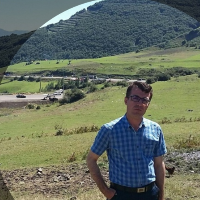Modelling Effects of Land Use Type and Spatial Pattern on Flow Hydrograph Variations
Author(s):
Abstract:
Assessing effects of land use spatial pattern on hydrologic characteristics and variation of flow hydrograph can provide new information leading more effective decision-making and integrated watershed management. However, less attention has been relatively paid to this subject. The emphasis of this research is to quantify the contribution and effects of different land use types and spatial pattern on flood hydrographs in Galaz Watershed (103 km2 area), located in West-Azarbaijan Province, Iran. In the present study, the Clark's Time-Area model has been employed for simulation of hydrograph. The Time Area Histogram (TAH) of the study watershed has been derived based on a spatially distributed travel time approach, and the flow hydrograph was simulated in incorporating with the different land use types and design rainfall. The hydrograph has been routed to the watershed outlet. Then, the distribution of flow hydrograph and the peak discharge were analysed considering different land uses between isochrones. According to the results, the effect of land use types and patterns led to variations of time area histograms and the resulted hydrograph. Based on the results, the higher peak discharge were determined for rangeland, agriculture and forest land use types, respectively. The generated runoff volume of the rangeland, agriculture, and forest land use types were 84, 12, and 4%, respectively. The implemented method can be used to simulate the effects of land use changes in storm basis to study the temporal flow variations and also to quantify the components of flow hydrograph
Keywords:
Language:
Persian
Published:
Iranian Journal of Watershed Management Science and Engineering, Volume:9 Issue: 31, 2016
Pages:
51 to 59
https://magiran.com/p1505932
مقالات دیگری از این نویسنده (گان)
-
Spatial assessment and zoning of landslide risk in Zamkan watershed using support vector machine and logistic regression
Fariba Esfandyari Darabad, Ghobad Rostami, *, Mousa Abedini
Hydrogeomorphology, Autumn 2024 -
Land degradation intensity mapping using environmental factors and Sentinel-2 derived spectral indices in an arid region in south of Iran
Mohamamd Ebrahim Afifi, *
Anthropogenic Pollution Journal, Winter and Spring 2024



